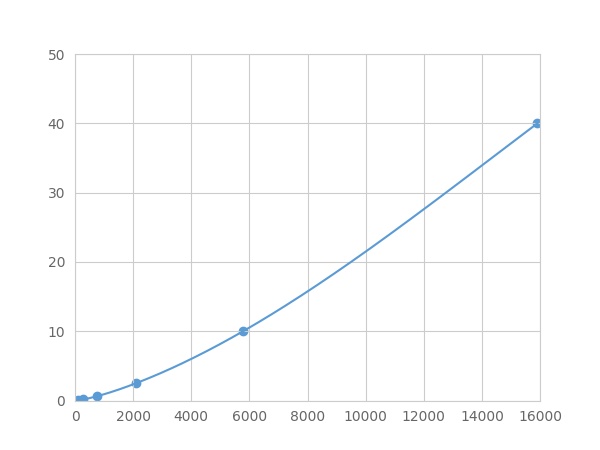Packages (Simulation)

Reagent Preparation

Image (I)
Image (II)
Certificate


Multiplex Assay Kit for Complement 1q (C1q) ,etc. by FLIA (Flow Luminescence Immunoassay)
C1-q; Autoantigen Clq
(Note: Up to 8-plex in one testing reaction)
- Product No.LMA747Mu
- Organism SpeciesMus musculus (Mouse) Same name, Different species.
- Sample TypeSerum, plasma and other biological fluids
- Test MethodDouble-antibody Sandwich
- Assay Length3.5h
- Detection Range0.04-40ng/mL
- SensitivityThe minimum detectable dose of this kit is typically less than 0.013 ng/mL.
- DownloadInstruction Manual
- UOM 8Plex 7Plex 6Plex 5Plex 4Plex 3Plex 2Plex1Plex
- FOB
US$ 405
US$ 420
US$ 443
US$ 475
US$ 506
US$ 552
US$ 622
US$ 778
Add to Price Calculator
Result
For more details, please contact local distributors!
Specificity
This assay has high sensitivity and excellent specificity for detection of Complement 1q (C1q) ,etc. by FLIA (Flow Luminescence Immunoassay).
No significant cross-reactivity or interference between Complement 1q (C1q) ,etc. by FLIA (Flow Luminescence Immunoassay) and analogues was observed.
Recovery
Matrices listed below were spiked with certain level of recombinant Complement 1q (C1q) ,etc. by FLIA (Flow Luminescence Immunoassay) and the recovery rates were calculated by comparing the measured value to the expected amount of Complement 1q (C1q) ,etc. by FLIA (Flow Luminescence Immunoassay) in samples.
| Matrix | Recovery range (%) | Average(%) |
| serum(n=5) | 78-99 | 95 |
| EDTA plasma(n=5) | 78-99 | 91 |
| heparin plasma(n=5) | 90-99 | 95 |
Precision
Intra-assay Precision (Precision within an assay): 3 samples with low, middle and high level Complement 1q (C1q) ,etc. by FLIA (Flow Luminescence Immunoassay) were tested 20 times on one plate, respectively.
Inter-assay Precision (Precision between assays): 3 samples with low, middle and high level Complement 1q (C1q) ,etc. by FLIA (Flow Luminescence Immunoassay) were tested on 3 different plates, 8 replicates in each plate.
CV(%) = SD/meanX100
Intra-Assay: CV<10%
Inter-Assay: CV<12%
Linearity
The linearity of the kit was assayed by testing samples spiked with appropriate concentration of Complement 1q (C1q) ,etc. by FLIA (Flow Luminescence Immunoassay) and their serial dilutions. The results were demonstrated by the percentage of calculated concentration to the expected.
| Sample | 1:2 | 1:4 | 1:8 | 1:16 |
| serum(n=5) | 91-104% | 98-105% | 90-103% | 95-104% |
| EDTA plasma(n=5) | 84-98% | 81-99% | 90-102% | 94-102% |
| heparin plasma(n=5) | 99-105% | 85-99% | 78-101% | 96-103% |
Stability
The stability of kit is determined by the loss rate of activity. The loss rate of this kit is less than 5% within the expiration date under appropriate storage condition.
To minimize extra influence on the performance, operation procedures and lab conditions, especially room temperature, air humidity, incubator temperature should be strictly controlled. It is also strongly suggested that the whole assay is performed by the same operator from the beginning to the end.
Reagents and materials provided
| Reagents | Quantity | Reagents | Quantity |
| 96-well plate | 1 | Plate sealer for 96 wells | 4 |
| Pre-Mixed Standard | 2 | Standard Diluent | 1×20mL |
| Pre-Mixed Magnetic beads (22#:C1q) | 1 | Analysis buffer | 1×20mL |
| Pre-Mixed Detection Reagent A | 1×120μL | Assay Diluent A | 1×12mL |
| Detection Reagent B (PE-SA) | 1×120μL | Assay Diluent B | 1×12mL |
| Sheath Fluid | 1×10mL | Wash Buffer (30 × concentrate) | 1×20mL |
| Instruction manual | 1 |
Assay procedure summary
1. Preparation of standards, reagents and samples before the experiment;
2. Add 100μL standard or sample to each well,
add 10μL magnetic beads, and incubate 90min at 37°C on shaker;
3. Remove liquid on magnetic frame, add 100μL prepared Detection Reagent A. Incubate 60min at 37°C on shaker;
4. Wash plate on magnetic frame for three times;
5. Add 100μL prepared Detection Reagent B, and incubate 30 min at 37°C on shaker;
6. Wash plate on magnetic frame for three times;
7. Add 100μL sheath solution, swirl for 2 minutes, read on the machine.
GIVEAWAYS
INCREMENT SERVICES
| Magazine | Citations |
| Journal of Clinical Immunology | Complement activation contributes to the injury and outcome of kidney in human anti-glomerular basement membrane disease. PubMed: 22941511 |
| Fish and Shellfish Immunology | Characterization of complement 1q binding protein of tiger shrimp, Penaeus monodon, and its C1q binding activity Pubmed: 23085472 |
| Journal of Neuroimmunology | Acute and prolonged complement activation in the central nervous system during herpes simplex encephalitis Pubmed:27235358 |
| Archives of Gynecology and Obstetrics | The role of complement components C1q, MBL and C1 inhibitor in pathogenesis of endometriosis Pubmed:29572748 |
| Journal of NeuroVirology | Intrathecal complement activation by the classical pathway in tick-borne encephalitis Pubmed: 30850976 |
| PLoS One | Complement activation profile of patients with primary focal segmental glomerulosclerosis Pubmed: 32569286 |
| CELL | Liver Immune Profiling Reveals Pathogenesis and Therapeutics for Biliary Atresia 33248023 |
| Chinese Journal of Nephrology, Dialysis & Transplantation | Plasma and urine complement activation products in light chain and heavy chain deposition disease |
| Journal of Chemical Neuroanatomy | Matrine treatment induced an A2 astrocyte phenotype and protected the blood-brain barrier in CNS autoimmunity 34280490 |
| Neuropsychiatr Dis Treat | Elevated Serum Complement C1q Levels After Traumatic Brain Injury and Its Association with Poor Prognosis Pubmed:35035218 |
| Catalog No. | Related products for research use of Mus musculus (Mouse) Organism species | Applications (RESEARCH USE ONLY!) |
| WEA747Mu | Wide-range ELISA Kit for Complement 1q (C1q) | Enzyme-linked immunosorbent assay for Antigen Detection. |
| SEA747Mu | ELISA Kit for Complement 1q (C1q) | Enzyme-linked immunosorbent assay for Antigen Detection. |
| LMA747Mu | Multiplex Assay Kit for Complement 1q (C1q) ,etc. by FLIA (Flow Luminescence Immunoassay) | FLIA Kit for Antigen Detection. |




